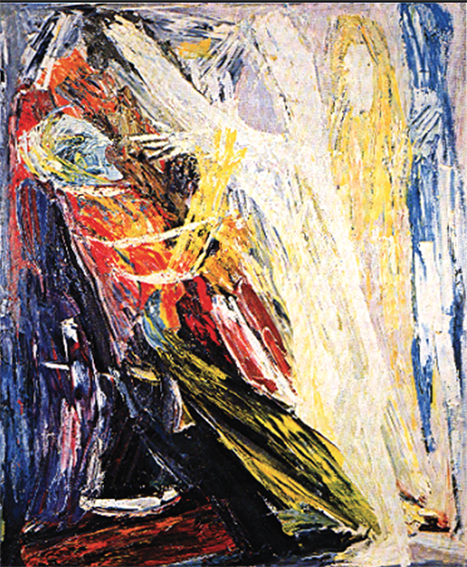How important is colour?
The purpose of this post is to provide a link to the first chapter of my book “Painting with Light and Colour“. In it is a set of dogmas that changed my life. They were given me, during the first weeks of my life as an artist, by the Polish artist, teacher and mathematician, Professor Marian Bohusz-Szyszko. He claimed that:
- “All good painting is based on colour”.
- “The use of colour in painting should be based on colour in nature”.
The importance to me personally of these two dogmatic propositions and, more importantly, the elaborations and explanations he added, can hardly be exaggerated, for they provided a basis for my life’s work, not only as an artist and teacher but also as a scientist.
One reason why the dogmas of Marian Bohusz-Szyszko were to prove to be so fruitful, related to their origins, for they were his way of providing a synthesis of ideas coming from a number of his predecessors. Particularly important among these were Seurat, Cézanne and Bonnard (one of Bohusz-Szyszko’s mentors). A major reason for taking the dogmas seriously is the the degree to which these artists and their Modernist Painter contemporaries were influenced by the revolution in the science of visual perception that took place in the eighteenth and nineteenth centuries.

This watershed for scientists and artists alike followed upon the realisation that the colour we see is not a property of surfaces in the external world but a creation of the eye and brain, based on inputs from the amazingly complex patterns of the colourless electromagnetic energy that enters the eyes. From this starting point came understandings about:
- Induced colour
- The three primaries.
- Optical mixing
It was these that inspired Seurat to develop his pointillist methods as a means of fulfilling his ambition to “paint with light”.
Little can he have known that he was also bringing about a transformation in the meaning of the word “colourist”. From the time of the so called “Venetian Colourists“ to the time of Seurat, the meaning of the word “colourist” centred on whole-field lightness relations (popularly referred to as “chiaroscuro”). As we shall see in later Posts, from now on, being a “colourist” meant:
- Having access to a greater range of both more fully-saturated and more nuanced colours.
- Being a master of whole-field colour relations.
All these issues will be elaborated upon in subsequent Posts. For the time being, as promised above, I want to share with you the first chapter of my book “Painting with Light and Colour”. It contains an account of:
- how it came to pass that I encountered Marian-Bohusz Szyszko, the Professor of Painting at the Academic Community of the Wilno* University in London.
- All five of his dogmas, and the ways in which they proved helpful.
.
“Painting with Light and Colour”: Chapter 1-“The Dogmas
.
Click here for lists of other Posts
*The Polish name for the formerly Polish town that, due to border changes that took place as a result of the Second World War, has now become Vilnius, the capital city of Lithuania.
The threat posed by Hitler and Stalin was the reason for the fleeing of large numbers of academics from the historic University of Wilno, then in Poland, and their regrouping in London as the Academic Community of the Wilno University in London.